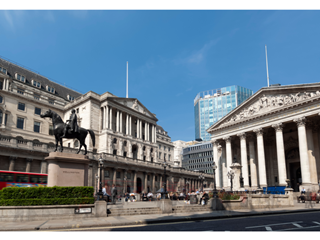
The Bank of England’s Monetary Policy Committee (MPC) voted to increase interest rates by 25 basis points today. This marks the 11th consecutive rise to the base rate since December 2021.
At 4.25%, interest rates were last higher in October 2008.
The decision comes as inflation unexpectedly increased in February, according to statistics released by the Office for National Statistics (ONS) yesterday.
Part of the reason inflation rose was due to the rising cost of food and restaurant prices.
"Inflation increased unexpectedly in the latest release, but it remains likely to fall sharply over the rest of the year," the Bank of England said in its notes after the announcement.
In addition, wage growth has also fallen to 5.7% in the three months to January, while unemployment figures remain at a near record low of 3.7%.
This data is also taken into consideration by MPC members as they believe strong wage growth can keep inflation high.
In today’s meeting, the MPC voted by a majority of seven to two to raise the rate by 25 basis points. Of the minority, both members preferred to retain the base rate at 4%.
The decision comes after the US Federal Reserve made a 25 basis point hike to its interest rates yesterday. The increase comes despite the recent collapse of Silicon Valley Bank, with Federal Reserve Chair Jerome Powell describing the US banking system as “strong and resilient”.
“We no longer state that we anticipate that ongoing rate increases will be appropriate to quell inflation; instead, we now anticipate that some additional policy firming may be appropriate,” he said.
This could mean the Federal Reserve may be coming towards the end of its rate hike cycle.
Meanwhile, the European Central Bank (ECB) increased its interest rates by half a percent last Thursday.
Given that this decision came during the turmoil at Credit Suisse, the ECB said it would continue to monitor the market closely.
“The Governing Council is monitoring current market tensions closely and stands ready to respond as necessary to preserve price stability and financial stability in the euro area,” it said in a statement.
Increasing the base rate is one way the Bank of England can try to bring inflation under control. This is because a higher base rate encourages people to borrow and spend less, therefore slowing down demand. To read about this in more detail, see our guides on inflation and the base rate.
A rise to base rate will come as disappointing news to borrowers who are not locked into a fixed rate mortgage, as their monthly repayments may rise in the coming months amid a cost of living crisis.
Those borrowers who wish to refinance might be pleased to see that fixed rate mortgages have fallen since the tail end of 2022, and that it is currently cheaper on average to lock into a five-year fixed rate over a two-year fixed deal.
The incentive to fix is clear from the continued rise to the average Standard Variable Rate (SVR), which is now above 7%, a level not breached since 2008.
A rate rise of 0.25 percentage points on the current average SVR of 7.12% would add approximately £772 onto total repayments over two years.
This is according to Moneyfactscompare calculations on a £200,000 mortgage over a 25-year repayment basis.
Affordability may well be the key challenge for borrowers struggling with the cost of living crisis, as interest rates are higher than prospective buyers, or those looking to remortgage, were perhaps anticipating.
Whether now is the right time to get a mortgage will entirely depend on someone’s individual circumstances, so seeking advice is vital. In the meantime, it would be wise for borrowers to keep a close eye on the mortgage market, housing supply and house prices, particularly for new buyers who are a critical part of keeping the market moving.
Savers may be pleased to see another rise to the Bank of England base rate, but they must take time to check their existing savings pots to see if they are earning a competitive return.
Not every savings provider will pass on a base rate rise, so it’s crucial for savers to ditch and switch if they find a better return elsewhere. If savers are comparing their easy access savings accounts, they will find challenger banks and building societies are offering some of the best returns, but the majority of the biggest high street brands pay less than 1% AER.
Providers are continuing to improve their Cash ISAs, including easy access ISAs, so it’s worthwhile for savers to consider using their ISA allowance before the current tax year ends.
Savers must also consider their Personal Savings Allowance when comparing ISA and non-ISA accounts, as there are typically differences in the top returns on offer, but ISAs may remain a more attractive choice amid rising interest rates and for their longer-term tax-free benefits.
Keeping on top of the changing market is crucial for savers regardless of which type of savings account suits their needs.
Information is correct as of the date of publication (shown at the top of this article). Any products featured may be withdrawn by their provider or changed at any time. Links to third parties on this page are paid for by the third party. You can find out more about the individual products by visiting their site. Moneyfactscompare.co.uk will receive a small payment if you use their services after you click through to their site. All information is subject to change without notice. Please check all terms before making any decisions. This information is intended solely to provide guidance and is not financial advice. Moneyfacts will not be liable for any loss arising from your use or reliance on this information. If you are in any doubt, Moneyfacts recommends you obtain independent financial advice.